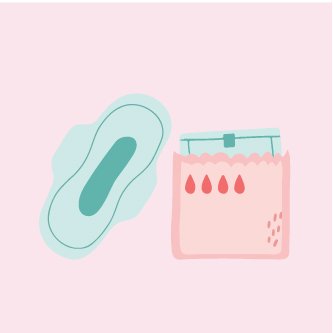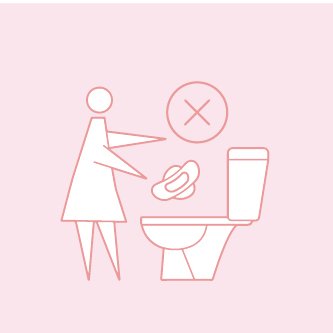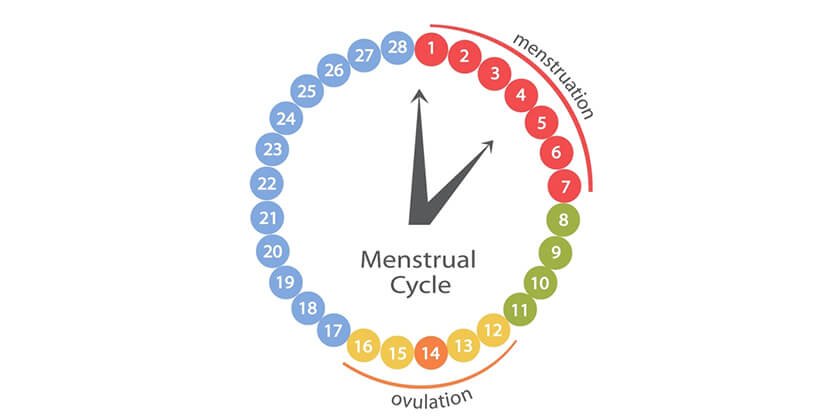
Understanding the Difference Between Panty Liners and Sanitary Napkins: A Comprehensive Guide
August 2, 2024
How to Help Your Daughter Manage Her Period Pain: A Mother’s Guide
August 2, 2024Responsible disposal of Aurora sanitary pads
At Aurora, we understand the importance of minimizing environmental impact. While we strive to create the most sustainable products, disposable pads inevitably generate waste. Unfortunately, our pads cannot be recycled or flushed, as they are not processed by wastewater-treatment facilities and can damage septic systems.
To mitigate this, we have designed our pads to be compatible with existing solid waste disposal systems, such as landfills. We urge you to help us protect the environment by disposing of used pads securely in the trash. Together, we can all contribute to a cleaner and greener world.
Thank you for your support in our journey towards sustainability.

How to dispose?
In India, the proper disposal of used sanitary pads is not only a matter of personal hygiene but also of public health and environmental protection. Unfortunately, many women still lack adequate information on how to safely and responsibly dispose of their used pads. In this blog, we'll provide practical tips and guidelines to help you dispose of your sanitary pads in an environmentally friendly and hygienic manner.
Why proper disposal matters?
Improper disposal of used sanitary pads can lead to numerous problems, including:
- Environmental pollution
- Health hazards for sanitation workers
- Blockages in sewage systems
- Unpleasant odors and contamination
By following proper disposal methods, we can mitigate these issues and contribute to a cleaner environment.
Steps to dispose of used sanitary pads
Sustainable alternatives
While disposable pads are convenient, there are sustainable alternatives that generate less waste:
- Menstrual Cups: These are reusable and can last for several years with proper care.
- Cloth Pads: Made from natural fabrics, these pads can be washed and reused multiple times.
- Biodegradable Pads: These are designed to break down more quickly in the environment compared to conventional pads.
Proper disposal of used sanitary pads is a crucial aspect of menstrual hygiene management. By wrapping, bagging, and placing them in designated trash bins, we can help protect the environment and ensure the health and safety of those who handle our waste. Additionally, considering sustainable menstrual products can further reduce our ecological footprint. Let's work together to create a cleaner and healthier environment for all.
The broader impact of sanitary waste disposal
Sanitary waste disposal is not just a matter of personal hygiene; it has significant environmental and public health implications. Every year, millions of disposable sanitary pads end up in landfills, contributing to an increasing environmental burden. By understanding the environmental impact of sanitary pads, we can take steps toward responsible waste management and sustainable menstrual care.
The environmental impact of sanitary pads
Disposable sanitary pads are typically made from a combination of plastics, synthetic fibers, and super-absorbent polymers. These materials are not biodegradable and can take hundreds of years to decompose. The environmental impact of sanitary pads is further compounded by the energy-intensive production processes and the carbon footprint associated with their disposal. By choosing eco-friendly menstrual products, we can significantly reduce this impact and contribute to a cleaner planet.
Embracing sustainable menstrual care
Sustainable menstrual care is an essential step toward reducing waste and promoting environmental responsibility. Options such as eco-friendly sanitary napkins, menstrual cups, and cloth pads offer effective alternatives to conventional products. These eco-friendly menstrual products are designed to minimize waste and lower our environmental footprint. By switching to these options, you can make a significant positive impact on both your health and the environment.
The importance of menstrual hygiene practices
Proper menstrual hygiene practices are crucial for both personal health and environmental protection. Ensuring that sanitary pads are disposed of correctly helps prevent the spread of harmful bacteria and reduces the risk of blockages in sewage systems. Educating others on these practices is equally important; spreading awareness can help foster a community-wide commitment to hygiene and sanitation.
Responsible waste management: a shared responsibility
Responsible waste management is a collective effort that begins with individual actions. By adopting proper disposal methods and choosing sustainable products, we can all play a part in reducing the environmental impact of menstrual waste. Remember, every small action contributes to a larger goal of protecting our planet and ensuring a healthier future for all.
Taking action for a greener future
Incorporating responsible waste management into your daily routine is a powerful way to make a difference. Whether it’s wrapping and disposing of sanitary pads correctly or switching to organic menstrual products, every step counts. By making informed choices, you can help mitigate the environmental impact of sanitary pads and promote sustainable menstrual care. Together, we can create a cleaner, healthier, and more sustainable world.
Frequently Asked Questions
By following these guidelines and encouraging others to do the same, we can ensure that sanitary pad disposal is done safely and responsibly.









